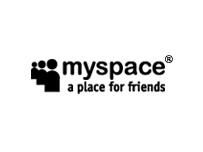... newer stories
Sonntag, 11. Januar 2009
Actions for Aid
fridax, 14:36h
Communication is basically humankind's way to experience the world that we live in. As such, people have long been counting on traditional exchange of knowledge (printed books, story-telling, instruction,...). All the while, keeping cultural memories fresh and accessible to an ever growing population.
Nowadays, over a billion people use the internet worldwide according to internetworldstats.com (1). For a state-of-the-art charity organization this opens up new grounds to effective and efficient campaigning and fundraising. For example: Google has become one of the main global players in collecting and offering information about websites etc., also in implenting ads into their various services. A collaboration between charities and this key actor via ads, banners etc. might be useful in reaching a vast amount of web-users for a good cause.
Thorough analysis of existing social networking services like MySpace, Facebook or Twitter may help targeting new trends, extending the charity's visibility and popularity towards Web 2.0 users and exchanging ideas and opinions more directly. Furthermore, charity-related news and actions can be submitted and promoted faster than any print media allows. Another example to reach the general public are charity concerts (2) or producing music albums (3). It would be conceivable to have live recordings of these concerts and then streaming them on any given website. Or distribute the products via iTunes, another key element of today's multimedia world. (Of course, this only works if artists, record labels etc. agree to make their products available.)
As people are able to inform themselves around the clock (RSS feeds, newsletters, mailing lists,...), click and google through numerous websites stating more or less adequate knowledge of the world (Wikipedia,...), the challenge is to address, intrigue and keep readers, potential donors, activists and the like in the long run. Actually, if the charity organizations' policies and actions are transparent for interested parties as well as employees, this may convince people of spending their time (and money) worthwhile.
Much can be done about the appeal of online campaigns. As mentioned above, using the full range of social networking services among others proves to be more interactive and accessible for a younger generation of computer users but not exclusively. It may also be a less intrusive way of promoting one's cause compared to TV spots (passive), public poster (passive), fundraising phone calls or face to face fundraising.
Labels to go:




(1) Source: http://www.internetworldstats.com/stats.htm
(2) For example: Bob Geldorf's LiveAid
(3) See: Amnesty International's Music for Human Rights project
Nowadays, over a billion people use the internet worldwide according to internetworldstats.com (1). For a state-of-the-art charity organization this opens up new grounds to effective and efficient campaigning and fundraising. For example: Google has become one of the main global players in collecting and offering information about websites etc., also in implenting ads into their various services. A collaboration between charities and this key actor via ads, banners etc. might be useful in reaching a vast amount of web-users for a good cause.
Thorough analysis of existing social networking services like MySpace, Facebook or Twitter may help targeting new trends, extending the charity's visibility and popularity towards Web 2.0 users and exchanging ideas and opinions more directly. Furthermore, charity-related news and actions can be submitted and promoted faster than any print media allows. Another example to reach the general public are charity concerts (2) or producing music albums (3). It would be conceivable to have live recordings of these concerts and then streaming them on any given website. Or distribute the products via iTunes, another key element of today's multimedia world. (Of course, this only works if artists, record labels etc. agree to make their products available.)
As people are able to inform themselves around the clock (RSS feeds, newsletters, mailing lists,...), click and google through numerous websites stating more or less adequate knowledge of the world (Wikipedia,...), the challenge is to address, intrigue and keep readers, potential donors, activists and the like in the long run. Actually, if the charity organizations' policies and actions are transparent for interested parties as well as employees, this may convince people of spending their time (and money) worthwhile.
Much can be done about the appeal of online campaigns. As mentioned above, using the full range of social networking services among others proves to be more interactive and accessible for a younger generation of computer users but not exclusively. It may also be a less intrusive way of promoting one's cause compared to TV spots (passive), public poster (passive), fundraising phone calls or face to face fundraising.
Labels to go:




(1) Source: http://www.internetworldstats.com/stats.htm
(2) For example: Bob Geldorf's LiveAid
(3) See: Amnesty International's Music for Human Rights project
... link (0 Kommentare) ... comment
... older stories
